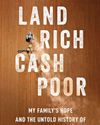
Viral diseases in beef cow herds are pesky and serious. That's why you vaccinate at least once a year for such things as BVD (Types 1 and 2), IBR, PI3, Lepto, and a few others that your veterinarian recommends.
If that were the whole story, it would be fairly simple. But sometimes the type of vaccine becomes an issue with reproductive performance.
Vaccines come in two types: killed vaccine and modified-live vaccine (MLV).
A killed vaccine has a killed portion of the pathogen and no live material. It still triggers an immune response.
MLV, on the other hand, contains an attenuated version of the live virus that comes closer to mimicking a real infection. It gives a stronger response, experts say, but it can also on rare occasions lead to pregnancy loss.
Elanco cattle reproductive specialist Frank White says research reveals that the strong response to an MLV stresses a cow's reproductive system. It interferes with her ability to form a functional corpus luteum on her ovaries and to produce progesterone, the hormone needed to maintain pregnancy. Sometimes this results in early pregnancy loss.
Elanco, which makes cattle vaccines, has tested its killed vaccine, Vira Shield, against competitive MLVs. Vira Shield resulted in a 4.3% higher pregnancy rate 56 days after breeding. "With 100 cows, that's four more pregnancies," White says.
Denne historien er fra December 2023-utgaven av Successful Farming.
Start din 7-dagers gratis prøveperiode på Magzter GOLD for å få tilgang til tusenvis av utvalgte premiumhistorier og 9000+ magasiner og aviser.
Allerede abonnent ? Logg på
Denne historien er fra December 2023-utgaven av Successful Farming.
Start din 7-dagers gratis prøveperiode på Magzter GOLD for å få tilgang til tusenvis av utvalgte premiumhistorier og 9000+ magasiner og aviser.
Allerede abonnent? Logg på

Hagie's Sprayer, Built With Deere Tech
The Hagie STS16 with 120-foot boom comes factory-installed with John Deere See and Spray Premium.

No-Spring Hydraulic Press
Air-return shop press makes for easier positioning.

The Disappearing American Farmer
A new book examines this trend and how it can be stopped.

60-Year Partnership Still Going Strong
Gil Tinsey and Fred Hasen met in college and have been farming together in Michigan since the 1960s.

A NewGeneration Farm
Regenerative agriculture spurs growth at Sather Farm and Ranch.

Yields Increase With Lime
Managing soil pH could increase crop production.

Solar Harvest Coming to a Field Near You
More research and work is being done to expand the use of agrivoltaics in North America.

The Cost of Leadership
When parents won't make decisions, it’s difficult for farming heirs to set goals.

The Power of Artificial Intelligence
How animal agriculture is reaping the benefits of Al.

Shutdown
lowa plant is first casualty in USDA meat processing initiative.